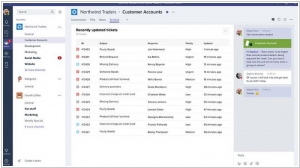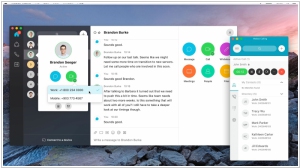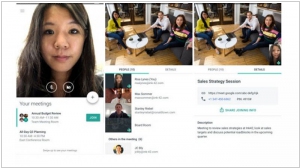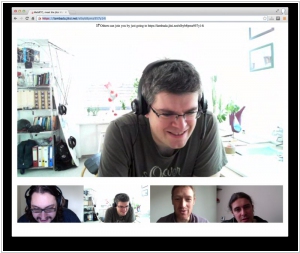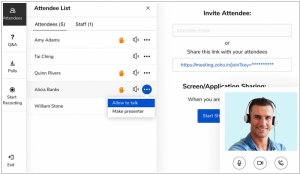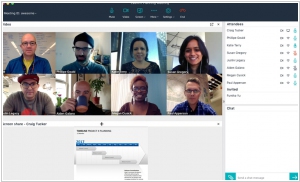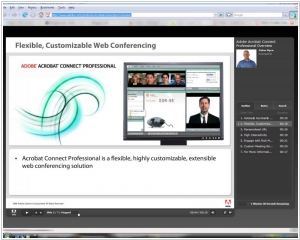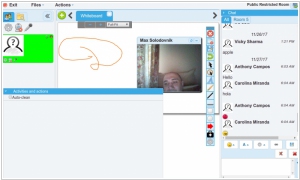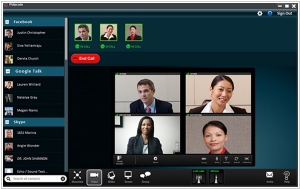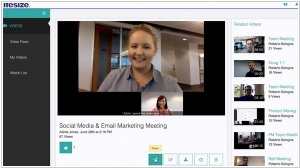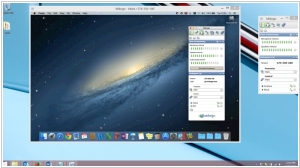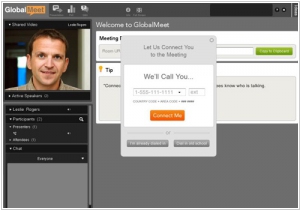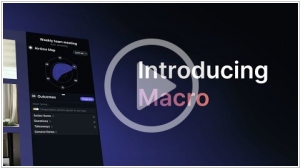Top 10 Videoconferencing software
March 27, 2024 | Editor: Adam Levine
20
Videoconferencing solutions enable online meetings and face-to-face collaboration and provide the ability to record conferences, support for large numbers of people and high-definition video.
1
Microsoft Teams is the chat-based workspace in Office 365 that integrates all the people, content, and tools your team needs to be more engaged and effective.
2
Zoom unifies cloud video conferencing, simple online meetings, and cross platform group chat into one easy-to-use platform. Our solution offers the best video, audio, and screen-sharing experience across Zoom Rooms, Windows, Mac, iOS, Android, and H.323/SIP room systems.
3
Cisco Webex is your one place to call, message, meet. Build stronger relationships with face-to-face meetings and real-time collaboration using whiteboarding, screen sharing and more. Showcase the best you with video conferencing that is simple but powerful.
4
(Formerly Google Hangouts) Video meetings for your business. Connect with your team from anywhere. With easy-to-join video calls, you can meet face to face without the added cost of travel.
5
GoToMeeting allows you to host an online meeting with up to 15 people – so you can do more and travel less. Using our web conferencing tool, you can share any application on your computer in real time. Attendees join meetings in seconds. Enable high-definition video conferencing with one click.
6
Multi-platform open-source video conferencing. Whether you want to build your own massively multi-user video conference client, or use ours, all our tools are 100% free, open source, and WebRTC compatible.
7
Zoho Meeting empowers you with remote support, online meeting, and web conferencing features to host instant meetings or web meetings for your audience.
8
The video technology platform that powers everything from ultra secure government meetings, to personalized banking, to efficient hands-free work.
9
With our cloud-based video collaboration service, you can forget about needing any additional hardware or software. Simply combine a Blue Jeans account with a video-enabled device and Internet access, and you have a quick and easy formula for effortless video conferencing
10
Amazon Chime is a secure, real-time, unified communications service that transforms meetings by making them more efficient and easier to conduct. The service delivers high-quality audio and video through an application that is easy to use and stays in sync across all of your devices. With Amazon Chime, meetings start on time, and a visual roster makes them easy to manage.
11
Adobe Connect is an enterprise web conferencing solution for online meetings, eLearning, and webinars used by leading corporations and government agencies. And it's based on Adobe Flash technology, so you can deliver rich interactions that participants can join easily.
12
Openmeetings is free video conferencing software that allows you to chat via video, to do whiteboarding, to convert documents on the fly, etc. It even allows you to share your desktop.
13
Collaborate anywhere, anytime, with anyone using Polycom video, voice, and content-sharing solutions. One-touch ease; audio and video with crystal-clear quality; enterprise-grade security, reliability and scalability. Polycom solutions give you the flexibility to meet and collaborate with colleagues, partners, and customers in any environment―immersive theater, conference room, work office, home office, or on-the-go. Wherever you are, wherever you go.
14
Russian cloud-based video conferencing service offers the majority of TrueConf Server features without the need to install a dedicated video conferencing server. To start using your TrueConf Online service, all you need is a webcam, a microphone or headset, and Internet access. Designed for group video conferencing in private networks at any level of complexity, TrueConf Server guarantees secure, reliable corporate communication. TrueConf Server is easy to deploy, scale and integrate with LDAP, corporate PBX or SIP video conferencing endpoints.
15
No other HD video conferencing solution makes the conference room experience so easy and accessible. Our solution connects our incredible Icon video systems to our remarkably simple-to-use Lifesize Cloud service—putting everyone one call away from pulling up a chair at the meeting.
16
With Mikogo you have the possibility to communicate securely and conveniently with your customers via video and screen sharing. 100% GDPR-compliant and completely web-based, Mikogo enables you and your customers to have secure and easy-to-use video meetings.
17
The Vidyo portfolio includes everything you need to deploy HD video collaboration to everyone in your organization, from core infrastructure to solutions that video-enable any device or application. Vidyo works the way you do. It runs on the devices you’re using now from smart phones to tablets, desktops to video room systems, bringing HD-quality video and content to every participant.
18
GlobalMeet platform redefines the way people work by providing the freedom to communicate and collaborate in a whole new way. From conference calls and meetings to online events, GlobalMeet is a business communications platform that helps take you where you need to go. Contact a sales representative today and learn how the GlobalMeet platform can transform your business.
Latest news about Videoconferencing software
2024. Zoom unveils all-in-one AI work platform for more than just video conferencing
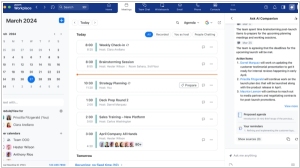
The unveiling of Zoom Workplace by a leading video conferencing company introduces an innovative "AI-powered collaborative platform" integrating its AI virtual assistant alongside a suite of novel features aimed at enhancing team productivity. Leveraging its existing AI Companion, Zoom Workplace streamlines meeting organization and summarization tasks, empowering users with its Ask AI Companion function to effectively prepare for and review meetings by aggregating and analyzing data from various Zoom applications such as Meetings, Mail, Team Chat, Notes, and Docs. Notably, the platform seamlessly integrates with third-party applications like Microsoft 365 and Google Workspace, further broadening its functionality and utility for users.
2024. Zoom debuts its app for Vision Pro, featuring digital personas, 3D files and more
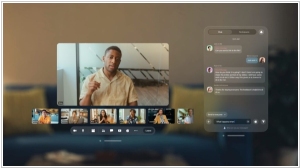
Zoom has unveiled its visionOS app designed specifically for Apple's Vision Pro. This innovative application introduces various features including "persona" support, enabling users to utilize a digital avatar during calls, and 3D object sharing through the "Team Chat" feature, among others. Apple's Persona feature captures a user's face scan, providing a spatial representation of themselves within Vision Pro, and Zoom's dedicated app seamlessly incorporates this, allowing participants to observe facial and hand movements during meetings. Additionally, Zoom on Vision Pro leverages the headset's augmented reality (AR) technology, presenting video calls as floating windows that blend seamlessly with the user's physical space. The visionOS apps' three-dimensional interface facilitates the sharing of 3D files, bringing objects to life in the user's environment. While 3D object sharing will not be available at the initial launch, Zoom has announced plans to roll out this feature later in the spring.
2023. Zoom launches an asynchronous video tool for the meeting-averse
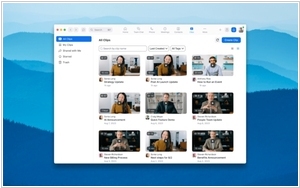
Zoom has introduced a new asynchronous video tool called Zoom Clips. It enables users to record, edit, and share video clips without the need for a live meeting. Currently in public beta, Zoom Clips offers a dedicated content library where users can efficiently manage, share, rename, search for, download, or delete their clips. Accessible through the desktop Zoom app, the Zoom web portal, as well as the Mac menu bar and Windows system tray, Clips allows users to capture both screen and webcam feeds, optionally with a virtual background, or specific portions of their desktop. After recording, users can enhance their clips by adding a title, description, and tags, trimming unwanted sections, and sharing via email through Zoom's web portal. Additionally, users can control access to the clip, specifying whether it is viewable by anyone with the link or only within their organization, and they can monitor comments and metrics such as completion rate and views from the same portal.
2023. Zoom partners with Anthropic to bring Claude chatbot to Zoom products
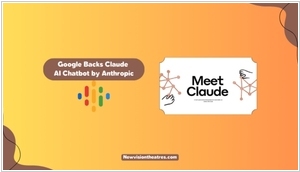
With the increasing prominence of generative AI, Zoom has recognized the importance of partnering with Language Model (LLM) companies to navigate the evolving AI landscape. In line with this strategy, Zoom has recently announced its collaboration with Anthropic, a partnership that will involve leveraging Anthropic's Claude chatbot on the Zoom platform, initially focusing on the Zoom Contact Center. The objective of this partnership is to enhance customer support by providing more accurate responses while minimizing instances where the models generate fictional answers in the absence of the correct response. Zoom plans to continue collaborating with the Anthropic model and gain a deeper understanding of its workings. Eventually, the intention is to incorporate this technology into other Zoom products. It is important to note that there is currently no specific timeline for the introduction of Anthropic-based functionality to the market. However, Zoom remains committed to ongoing development in this area.
2023. Zoom acquires employee communications platform Workvivo
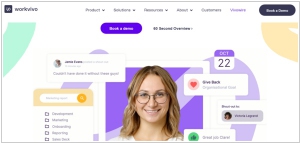
Zoom has announced its intention to purchase Workvivo, an Irish startup that has been operating for six years with a focus on enhancing internal communication and culture within businesses. Unlike Zoom and other similar communication tools, Workvivo places a greater emphasis on asynchronous communication rather than real-time communication. Its platform is designed to promote employee engagement on a broader level, offering features such as an activity feed, people directory, surveys, and a channel for important company announcements, similar to a modern intranet. Workvivo has gained a notable customer base since its establishment in Cork in 2017, with companies such as Amazon, RyanAir, and Bupa among its clients.
2023. Zoom announces AI features that act as your personal assistant
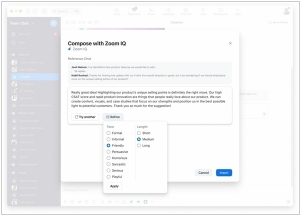
Video conferencing provider Zoom announced new additions to its AI-powered tool Zoom IQ. The new features leverage OpenAI's Large Language Model, or LLM, to summarize meetings, generate recaps, and draft chat and email responses. On the heels of announcements from Microsoft, Google, and Slack, Zoom is the latest major productivity tool to get the AI treatment. Zoom IQ already uses AI to give users meeting information through chapters, highlights from recordings, and action items. But it is taking it a step further by integrating OpenAI's powerful generative AI model. If you're late to a meeting, Zoom IQ can summarize in real time what you've missed and ask questions for you. Using text prompts, it can generate brainstorms using Zoom's whiteboard tool.
2023. Zoom is adding new features to compete with Slack, Calendly, Google and Microsoft
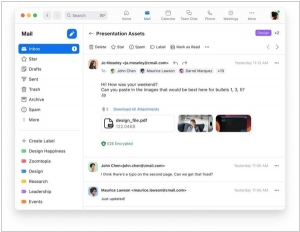
Zoom is expanding its offerings to compete with a range of companies, including Slack, Calendly, Google, and Microsoft, by introducing new features such as AI-powered meeting summaries, prompt-based email responses, and whiteboard generation, in addition to video "Huddles" and a meeting scheduler. Zoom aims to encourage users to shift more of their work tasks to its platform, and as such, it is making its email and calendar clients available to everyone. The company had been testing these tools since last year as part of a broader push beyond meetings. Furthermore, Zoom is offering hosted email and calendar services with end-to-end encryption protection and custom domains for paid users, which could serve as an alternative to Microsoft Exchange and Google Workspace for businesses.
2022. Meta partners with Microsoft to bring VR to Teams
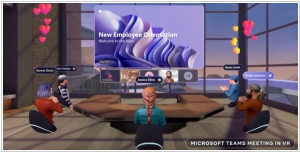
Meta has recently announced a strategic partnership with Microsoft, aimed at incorporating Windows apps and integrating Microsoft Teams functionalities into Meta's metaverse hardware endeavors. This collaboration entails the integration of Microsoft Teams with Quest devices, enabling seamless communication and collaboration. Furthermore, Microsoft will provide a solution to stream Windows apps directly to Meta's headsets. The partnership also paves the way for the inclusion of custom 3D avatars in the metaverse experience. In terms of collaboration, Meta's VR space for teamwork, Horizon Workrooms, will be connected with Teams, allowing users to join Teams meetings directly from Workrooms. Additionally, Microsoft 365 will be accessible on Quest, enabling users to interact with content from productivity applications such as Word, Excel, PowerPoint, and Outlook. Notably, these are not full-fledged VR versions of the apps but rather Progressive Web Apps designed for the purpose.
2022. Google Meet gets automatic meeting transcriptions

Google has introduced automatic meeting transcriptions as a built-in feature for its video conferencing service, Meet. Previously, users had to rely on third-party services like Otter to record and transcribe their calls. This new functionality is currently available for meetings conducted in English, with support for French, German, Spanish, and Portuguese slated for release in 2023. It's worth noting that Microsoft Teams already introduced a similar feature for English meetings over a year ago. Although Google possesses expertise in speech-to-text services through products like Assistant and the Android Recorder app, the addition of this feature to Meet has been a long-awaited development. Nevertheless, it is a welcome addition to enhance the meeting experience within Meet.
2022. AI-powered videoconferencing platform Headroom raises $9M
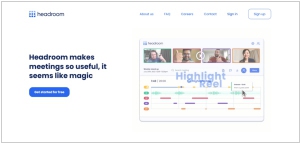
Headroom, a startup that focuses on developing AI-powered software to ostensibly enhance meeting efficiency, has successfully raised $9M. Headroom leverages AI to provide various features, including automatic transcripts and meeting summaries, which remain searchable after meetings through filters for attendees, notes, and topics. The platform allows for complete meeting replays and generates highlight reels with key moments and action items using AI-powered upscaling. Additionally, participants can utilize quick reactions like "thumbs up" and "wave" during meetings. One of Headroom's distinguishing features is its comprehensive analytics capabilities. The application aims to quantify "real-time meeting energy" by analyzing video, audio, and text from participants. It even tracks eye movements, hand gestures, and head poses to discern the sentiment expressed during exchanges.
2022. Google Meet’s new feature lets users consume YouTube and Spotify together
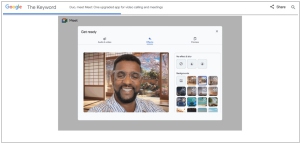
Google has recently announced the addition of live-sharing features, similar to Apple SharePlay, to Google Meet. This update aims to enhance collaboration during video calls by allowing participants to engage with content simultaneously in real-time. It's worth mentioning that Google had previously introduced live-sharing features, such as watching YouTube videos together, in Duo back in February. Now, with the integration of Duo into Meet, these features are being extended to the Meet platform. With the new live-sharing functionality, users will have the ability to watch YouTube videos collectively. These exciting features will be accessible through the Activities tab, which also includes options for Q&A sessions and polls, and can be found in the three-dot menu.
2022. Zoom dives deeper into intelligent customer service with Solvvy acquisition
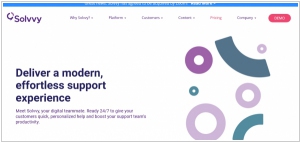
In the previous year, Zoom expressed interest in acquiring Five9 as a means to enter the customer service domain. Although the deal eventually fell through, Zoom's determination to establish a presence in customer service remained unwavering. Earlier this year, the company unveiled a new customer service solution, leveraging its existing capabilities to provide an integrated customer service experience within the Zoom toolset. Building upon this foundation, Zoom has recently announced its intention to acquire Solvvy, a nine-year-old startup specializing in conversational AI. By incorporating Solvvy's technology, Zoom will gain enhanced automation and intelligence, enabling the resolution of routine queries without human intervention.
2022. Zoom announces Zoom Whiteboard, gesture recognition among several updates
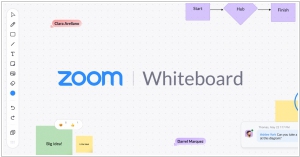
Zoom has recently announced a range of updates and new features, including the introduction of a virtual whiteboard and gesture recognition. One notable update is Zoom IQ for Sales, an AI-powered feature that analyzes calls to provide valuable insights. Additionally, Zoom has implemented Gesture Recognition, allowing users to raise a hand or give a thumbs up during a call instead of clicking on a reaction button. Currently, this feature supports only these two gestures and requires the client version 5.10.3 or later. By default, Gesture Recognition is disabled at the client level, but it can be enabled at the account, user, or individual level.
2022. Zoom launches AI-powered features aimed at sales teams
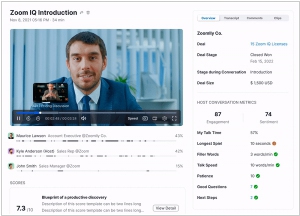
Zoom has unveiled Zoom IQ for Sales, a new offering that utilizes AI to analyze sales meetings and deals, providing valuable insights for sales teams. This marks Zoom's entry into the realm of sales automation software. Zoom's venture into this space is a natural progression of its ongoing investments in AI technology. Previously, the company introduced an AI-powered feature that highlights key moments from recorded meetings by automatically selecting the most relevant segments based on audio transcriptions. Additionally, Zoom recently acquired Kites, a startup focused on real-time translation and transcription, further bolstering its AI capabilities. The introduction of Zoom IQ for Sales demonstrates the company's commitment to leveraging AI to enhance sales processes and improve overall sales effectiveness.
2021. Virtual meeting platform Vowel raises $13.5M
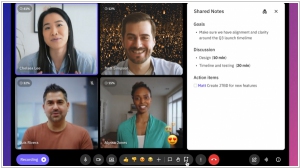
Virtual meeting platform Vowel has successfully raised $13.5 million in funding. Vowel is introducing a comprehensive meeting operating system that encompasses a range of tools, including real-time transcription, integrated agendas, notes, and action items, meeting analytics, and searchable, on-demand meeting recordings. The company adopts a freemium business model and plans to launch a business plan in the upcoming fall, priced at $16 per user per month. The business plan will offer additional features such as advanced integrations, enhanced security, and administrative controls. Vowel aims to revolutionize meetings by incorporating components from popular platforms like Slack, Figma, and GitHub. By capturing audio and video, meetings can be paused, allowing users to add notes and follow along with a real-time transcription, enabling latecomers or those unable to attend the meeting to catch up effortlessly. Once meetings conclude, they can be easily shared, and Vowel provides a search function that enables users to locate specific discussions involving particular individuals or topics.
2021. Cisco to acquire startup Socio to bring hybrid events to Webex
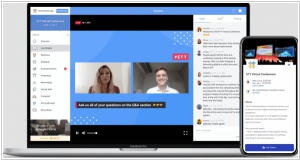
Cisco has made an acquisition by purchasing the startup Socio, a company specializing in planning hybrid events that combine both in-person and virtual elements. Socio offers a crucial hybrid event management component that will complement Cisco's existing Webex platform. The objective behind this acquisition seems to be integrating Socio's capabilities with the recently acquired Slido, thereby transforming Webex from a primarily video meeting application into a comprehensive event platform. Socio, established in 2016, has received approximately $7 million in investment capital, as reported by Crunchbase. The company boasts an impressive roster of enterprise clients, including Microsoft, Google, Jet Blue, Greenpeace, PepsiCo, and Hyundai.
2021. Google Meet gets a refreshed UI, multipinning, autozoom and more

Google has introduced a significant update to its video-meeting service, Google Meet, incorporating a range of user interface enhancements for desktop users and introducing several new features. Noteworthy additions include multipinning, allowing users to highlight multiple feeds instead of just one, and new AI-driven video capabilities for light adjustments, autozoom, and a Data Saver feature that restricts data usage on slower mobile networks. For presenters who prefer not to view their own video feed, Meet now enables minimizing or hiding of their own feed. Additionally, users have the option to pin their own feed alongside other participants on the grid, providing the opportunity to briefly glance into their own eyes during the meeting.
2021. Daily raises $15M Series A for its real-time video platform

Daily, the company behind a developer platform dedicated to real-time audio and video solutions, has successfully concluded a Series A funding round of $15 million. Daily's platform offers developers the flexibility to integrate video calls into their applications using either a prebuilt user interface (UI) with just two lines of code or by creating their own custom video UI and UX. With the prebuilt option, developers can embed a video call widget that encompasses video chat, screen sharing, and recording functionalities. On the other hand, the custom option empowers developers to have greater control over the layout, workflow, and video and audio tracks to tailor the experience to their specific needs.
2020. Here.fm raises $2.9M to reimagine video chat
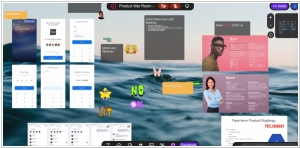
Here.fm, a recently launched web-based communication platform, has successfully concluded a seed round of funding, raising $2.9 million. In contrast to Zoom, Here.fm offers a fully customizable room with integrated video chat. Users have the freedom to personalize their room by adding virtual items, gifs, backgrounds, notes, pictures, and more. Moreover, they can customize their own video chat window as well as those of other participants, arranging them in preferred sizes and shapes within the virtual room. Screen sharing is also available, just like in any other video chat software. The competition in this space is becoming increasingly fierce. Mmhmm provides similar tools for customizing video chat rooms, with a focus on presentation rather than casual interaction. Macro, on the other hand, is a tool that enhances productivity and efficiency by integrating with Zoom calls. Additionally, numerous startups emerged during the pandemic, aiming to develop the next generation of video chat platforms.
2020. Dialpad acquires video conferencing service Highfive
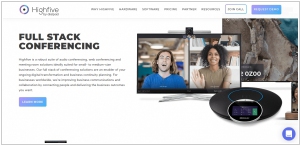
VoIP provider Dialpad, known for its popular video conferencing service UberConference, has recently completed the acquisition of Highfive, a well-funded startup specializing in video conferencing solutions for conference rooms. With this strategic move, Dialpad is significantly reinforcing its focus on video capabilities. Although UberConference already includes video conferencing features, it has primarily gained recognition for its calling features. Alongside its conference call solutions and VoIP platform for businesses, Dialpad also provides a comprehensive contact center solution.
2020. Kudo raises $6M for its real-time translation and video conference platform
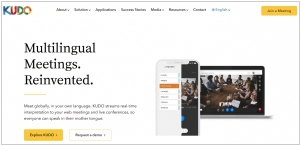
SaaS was a trending topic in 2020, and the demand for remote work facilitation tools was also high. It's no wonder that Kudo, a service offering video chatting and conferencing tools with integrated translator support and multiple audio streams, successfully raised $6 million this year. KUDO enables real-time interpretation in web meetings and live conferences, allowing participants to speak in their native languages. Kudo operates as a SaaS with an optional services component, although services typically yield lower margins compared to software.
2020. Huddl.ai wants to bring more intelligence to online meetings
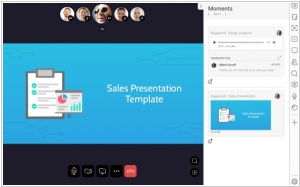
Huddl.ai is an innovative startup aiming to incorporate artificial intelligence into online meeting technology. By leveraging AI tools, Huddl.ai transcribes meetings, extracts important points, and assists users in comprehending the essence of lengthy sessions without the need to extensively review notes. Unlike existing solutions such as Zoom, Cisco WebEx, Google Meet, and Microsoft Teams, which merely provide a link to a cloud room for participants to join, Huddl.ai seeks to introduce a more organized approach to the entire meeting process.
2020. Macro raises $4.3M to make your never-ending Zoom calls more useful
Macro is an innovative native app that utilizes the Zoom SDK to enhance the depth and analysis of your daily work meetings. The app offers two distinct modes. The first mode focuses on collaboration, transforming the typical Zoom meeting into a lightweight overlay. In this mode, participants are displayed in small, circular bubbles at the top of the screen. It is designed for situations where individuals are collaborating on the same project, such as wireframing or working on a shared document. The second mode is the Arena or Stadium mode, which is tailored for interactive meetings and presentations. It incorporates two notable features. The first feature is Airtime, which provides insights into each participant's speaking time over the past five minutes, thirty minutes, or throughout the entire meeting. This allows for a better understanding of each participant's level of contribution. The second feature is a text-input system located on the right side of the user interface. This system enables participants to enter questions, takeaways, action items, and insights directly from the call, ensuring important information is captured and documented effectively. Macro revolutionizes the traditional meeting experience by offering advanced features that enhance collaboration, analysis, and productivity during Zoom meetings.
2020. Zoom announces new Hardware as a Service offering
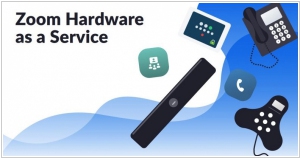
Zoom has unveiled a new offering called Hardware as a Service, which is built on the ServiceNow platform. Simultaneously, the company has entered into a partnership with ServiceNow to adopt Zoom and Zoom Phone as the standardized communication tools for its workforce of 11,000 employees, showcasing another instance of SaaS collaboration. With the new Hardware as a Service offering, customers utilizing Zoom Phone and Zoom Rooms software can now obtain associated hardware directly from Zoom at a fixed monthly cost. The initial set of solutions providers for this service includes DTEN, Neat, Poly, and Yealink, as announced by the company.
2020. Google Meet takes on Zoom by going completely free for everyone

Google has made an announcement stating that its premium videoconferencing software, Google Meet, will now be offered for free to all users. Previously, Meet was exclusively accessible through Google's G Suite, a service package designed for businesses, with a starting price of $6 per month per person. However, it will now be accessible to anyone with a Google account. Google plans to gradually expand availability over the upcoming weeks, prioritizing the maintenance of a secure and reliable user experience. The free version of Meet will impose a time limit of 60 minutes on meetings, although Google will not enforce this limitation until after September 30. In comparison, the free version of Zoom imposes a 40-minute time limit on video calls. The free version of Meet also imposes other restrictions, such as a maximum of 100 participants, whereas the paid version supports up to 250 participants. Additionally, recording and saving calls are only available with the paid version.
2020. Google Meet adds Zoom-style gallery view

Google is introducing a gallery view, similar to Zoom, to its video-chat product, Google Meet. It's important to note that this service is not available for free to all Google account holders like Hangouts. Instead, it is a paid enterprise service primarily designed for businesses. Access to Google Meet starts at $6 per month, per user for the most affordable G Suite tier. The "most popular" version is priced at $12 per month, per person. Essentially, you are paying a premium for a feature that competing platforms like Zoom provide at no cost.
2020. Verizon is buying B2B videoconferencing firm BlueJeans
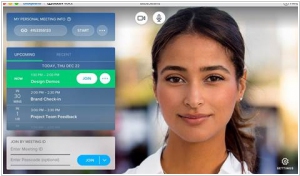
Verizon, a US carrier, has made a substantial investment of under $500 million to acquire BlueJeans Network, a veteran B2B videoconferencing platform. BlueJeans, which can be found at Blue Jeans, has successfully raised approximately $175 million in funding since its establishment around ten years ago. This acquisition aligns with the current surge in videoconferencing usage, as white-collar workers worldwide participate in meetings from their homes amid the coronavirus pandemic. Despite Zoom, a rival of BlueJeans, receiving the most attention during the recent viral videoconferencing boom, Verizon's acquisition strengthens its position in the evolving market.
2020. Google is rebranding Hangouts services
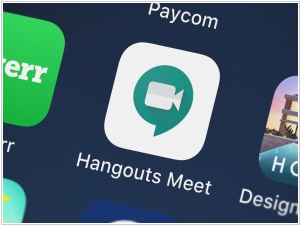
Google has made a significant change to its enterprise G Suite offering by officially rebranding Hangouts Chat as Google Chat and Hangouts Meet as Google Meet. With this move, the Hangouts brand is no longer associated with the enterprise-focused services. However, Google will retain the Hangouts name for its consumer chat app, which was originally created as a successor to Gchat and emerged from Google's discontinued social network, Google+, in 2013.
2020. Skype has a Zoom-like video call function called 'Meet Now'
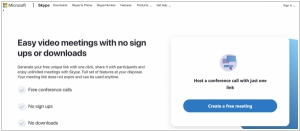
Skype made a notable comeback by reminding the world about its presence through a tweet. Surprisingly, Skype offers a video chat feature similar to Zoom, known as Meet Now, which doesn't necessitate having a Skype account or the app. With Skype Meet Now, users can generate a meeting URL to share with participants. While it is user-friendly on the web-based client, selecting the option to open the meeting in the Skype app may encounter issues. This brings us to the observation that Skype seems to have missed out on the surge in popularity of video calling platforms.
2019. GoToMeeting improved AI-transcription in videoconferencing software
LogMeIn has unveiled the latest version of GoToMeeting with a strong emphasis on delivering a user-friendly and intuitive experience, while providing IT departments with enhanced control over deployment, management, and security. This new release includes a range of updates aimed at improving the collaboration platform's ease of use for both IT and users, spanning pre-meeting, during-meeting, and post-meeting functionalities. These updates include a completely redesigned video-first interface that is consistent across all devices, exceptional audio quality, real-time note-taking capabilities, and AI-powered transcription. Furthermore, hosts now have the ability to create multiple personalized meeting rooms, complete with customized branding, enabling teams to instantly collaborate whenever needed. GoToMeeting has also made updates to its popular calendar plugins and integrations, offering seamless compatibility with Office 365, Outlook, GSuite Calendar, Salesforce, and more. Additionally, GoToMeeting remains committed to supporting integrations with tools like Slack and Zoho.

